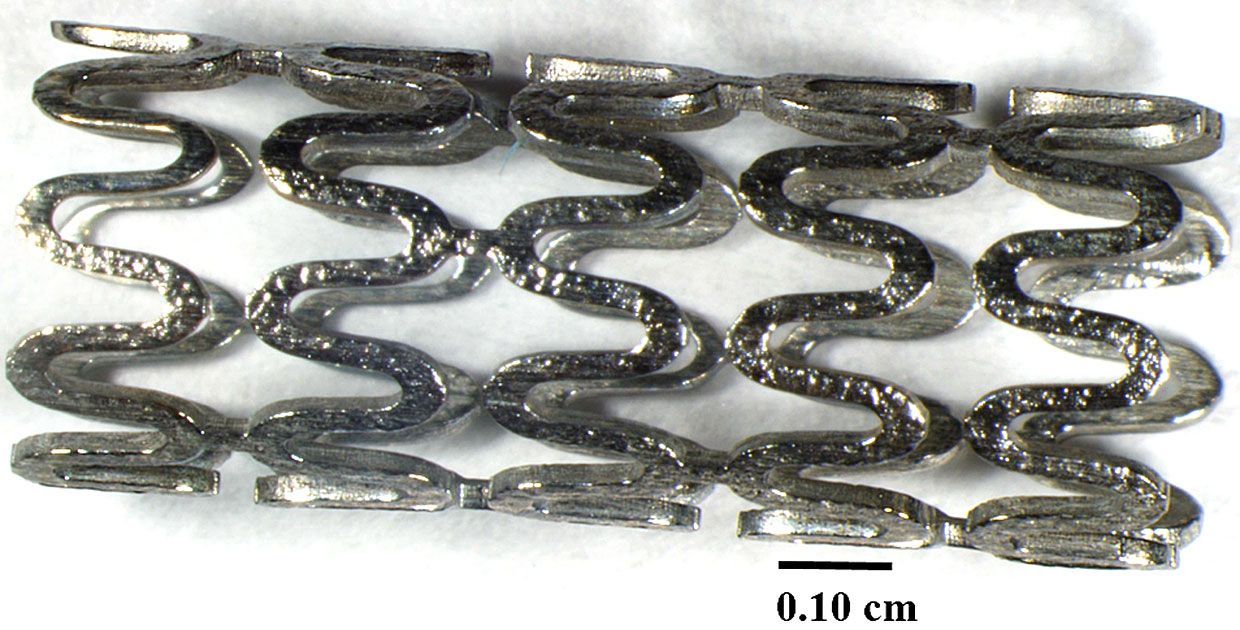4 Products That Make Sense to Manufacture in Orbit
Space is open for business, and some entrepreneurs plan to make the final frontier into a manufacturing hub. There's plenty of real estate. But it takes a few thousand dollars to launch a kilogram of stuff into space.
"The key question is: What is it that justifies the expense of doing these things in low Earth orbit?" says William Wagner, director of the University of Pittsburgh's McGowan Institute for Regenerative Medicine, which will conduct biomedical research on the International Space Station (ISS).
Here are some technologies that might merit the "made in space" label.
 Photo: NASA Fiber-optic Cable
Photo: NASA Fiber-optic Cable Made from fluoride glass, a kind of fiber-optic cable called ZBLAN could have as little as one-tenth the signal loss of silica-based optical fibers.
But quality ZBLAN fibers are hard to make on Earth. As the molten glass is stretched into fibers as thin as fishing line and then cooled, tiny crystals sometimes form, which can weaken signals. Microgravity suppresses the formation of these crystals, so fibers made in space would carry more data over longer distances.
More data plus the need for fewer repeaters under the ocean would justify a higher price, says Austin Jordan of Made in Space, which plans to produce such fibers in space for terrestrial clients. "The math works. It would pay for itself and drive a profit," he says.
Two other companies, Fiber Optic Manufacturing in Space and Physical Optics Corp., also plan to make ZBLAN fibers in low Earth orbit.
 Photo: NASA Organs
Photo: NASA Organs There are 120,000 people waiting for an organ transplant in the United States alone. "Most will never see one, there is such a shortage," says Eugene Boland, chief scientist at Techshot, which wants to print human hearts in space.
The heart, with its four empty chambers and highly organized muscle tissue made of different types of cells, is virtually impossible to print on the ground. On Earth, tissues printed with runny bioinks made of gel and human stem cells collapse under their own weight. Scientists must add toxic chemicals or a scaffold.
Printing hearts and other organs in microgravity could be done using pure bioinks. "The cylindrical shape extruded from the nozzle is maintained, so you can build a more fragile 3D structure that would allow cells in the gels to secrete their own matrix and strengthen up," says Wagner. And the printed layers fuse together without forming the striations seen in constructs printed on the ground, Boland says.
Techshot, which is based in Greenville, Ind., is partnering with 3D-bioprinter manufacturer nScrypt. Their first bioprinter went to the ISS in July, but the small patch of heart muscle it printed didn't survive reentry. The next mission, which launched in November, should result in thicker tissue that can be tested on Earth when it returns in January.
 Photo: Prashant N. Kumta Metal Alloys
Photo: Prashant N. Kumta Metal Alloys Outer space is the perfect place to make metal alloys. Microgravity allows the metals and other elements to mix together more evenly.
Magnesium alloys for medical implants have especially high potential. At half the weight of titanium alloys, magnesium alloys more closely match the density and strength of bone, and they harmlessly biodegrade in the body, says University of Pittsburgh bioengineering professor Prashant Kumta, who is working with Techshot to produce his patented alloys in a high-temperature furnace on the ISS.
Making these alloys involves melting highly reactive magnesium with other elements such as calcium and zinc, keeping the melted materials in a vacuum for a long time so the elements mix evenly, and then cooling it all down.
On Earth, impurities settle to the bottom, and the upper layer oxidizes to form an unusable skin. Both have to be thrown out. Even the usable middle layer has pores and pockets of unmixed elements and must be further processed to make a quality material. None of these problems occur when alloys are manufactured in microgravity.
- Meat
What Techshot and nScrypt want to do with human organs, Israeli food-tech startup Aleph Farms plans to do with meat. The two-year-old Rehovot-based company grows cultured beefsteaks that look and taste like the real thing. "While other companies use only muscle cell, we also grow connective tissue, blood vessels, and fat cells, which lets us make beefsteaks instead of patties," says Yoav Reisler, external relations manager at the company.
In September, the company teamed up with Russian company 3D Bioprinting Solutions to create the first tiny piece of meat on the ISS. It isn't a huge technical advance, but it could feed astronauts on long-term crewed missions, as well as future space settlers as they set up a permanent base.
This article appears in the December 2019 print issue as " 4 Products To Manufacture In Orbit."